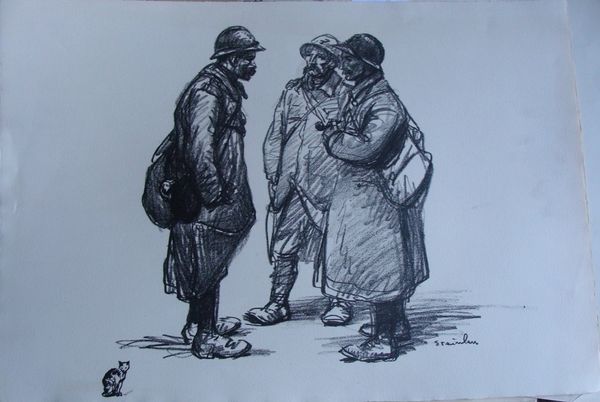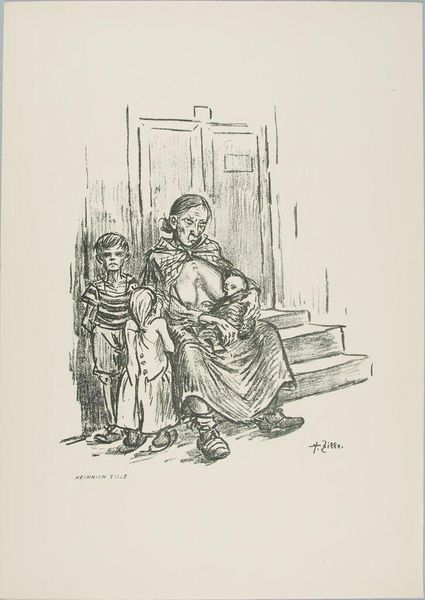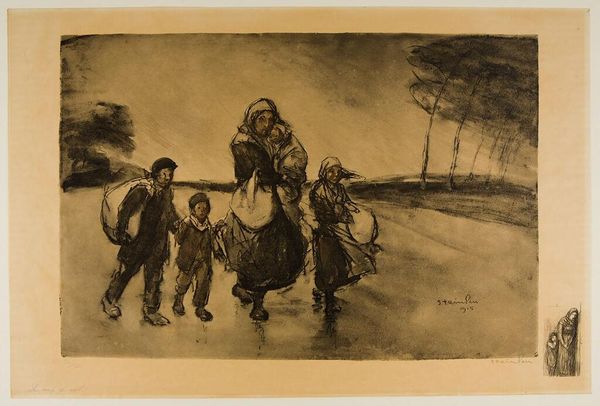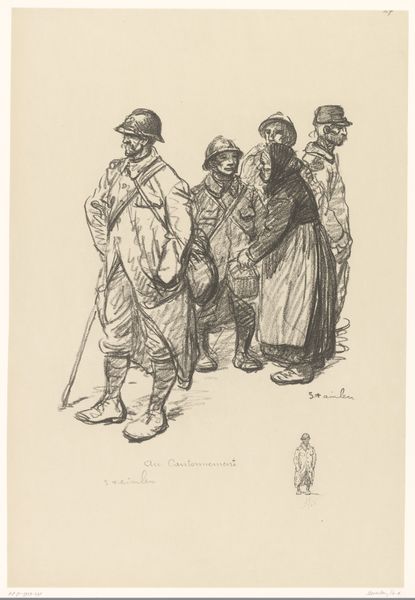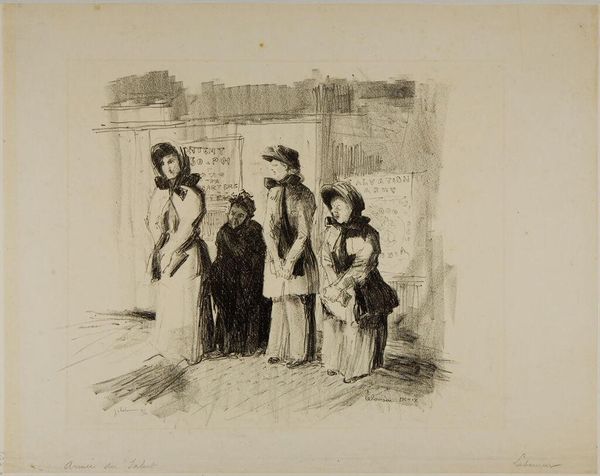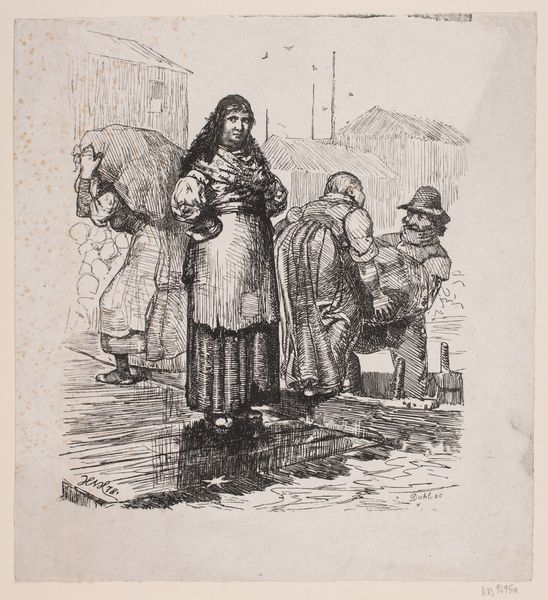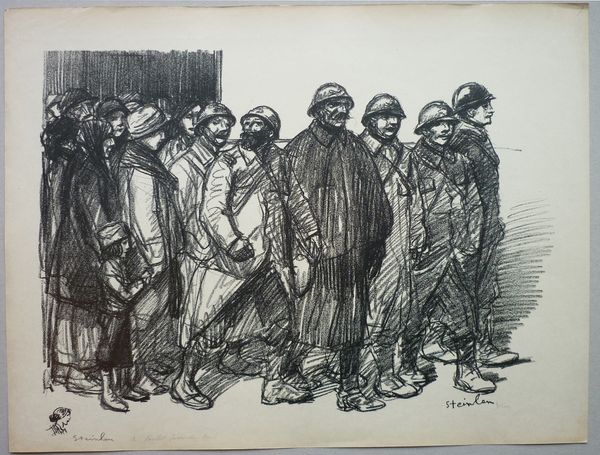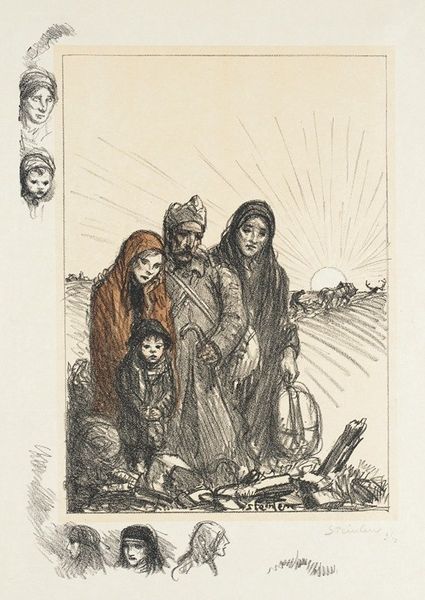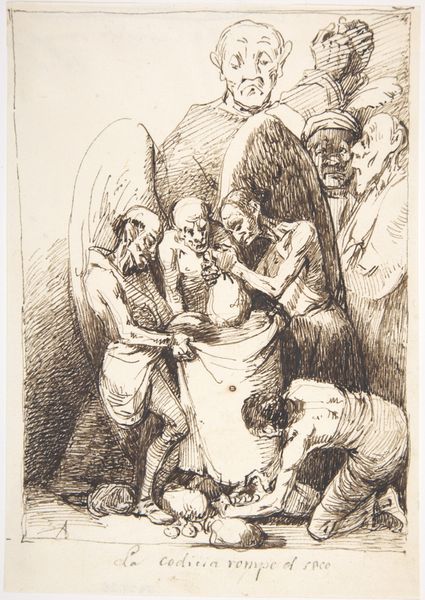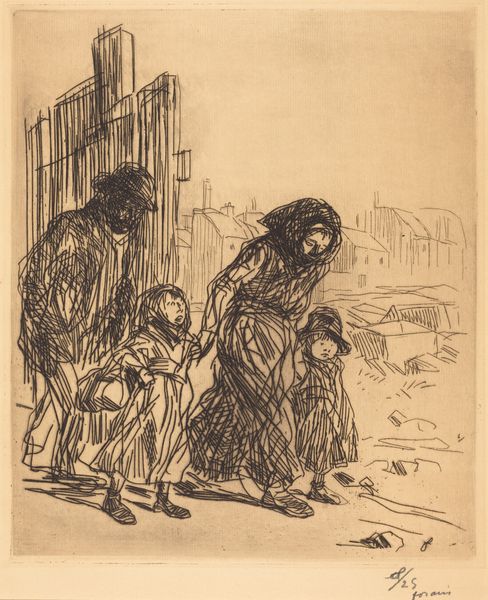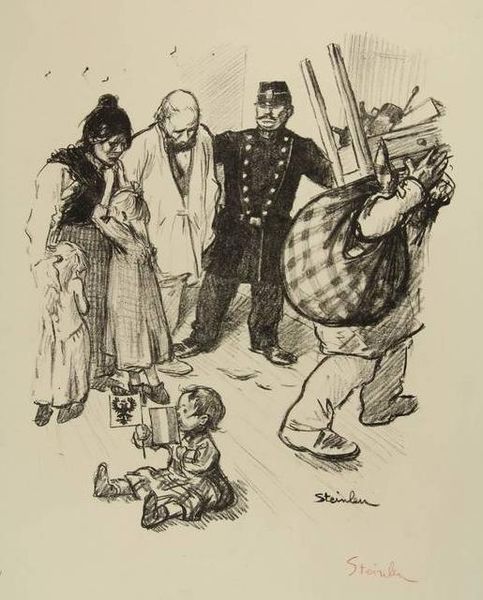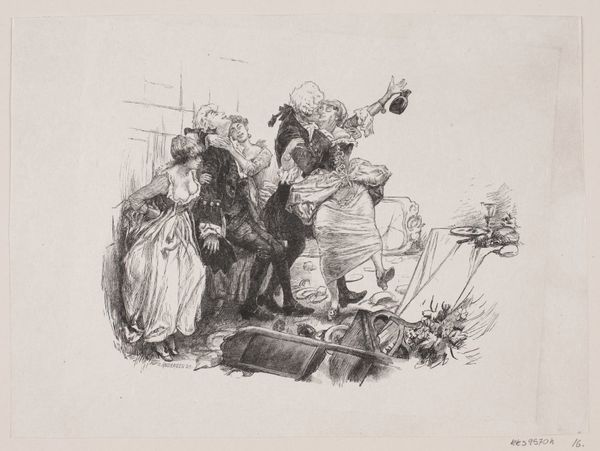
drawing, pencil
#
portrait
#
drawing
#
pencil sketch
#
charcoal drawing
#
pencil drawing
#
group-portraits
#
pencil
#
expressionism
#
realism
Copyright: Public domain
Curator: Steinlen's "Sans Famille," created in 1916, uses primarily pencil to capture a poignant moment during a time of conflict. The work offers an interesting commentary on displacement and human interaction. Editor: It’s heartbreaking, isn’t it? The loose pencil work almost dissolves the figures into shadows. They seem weary, almost ghosts moving across the page, clinging to each other. Curator: Indeed. The medium of pencil itself feels particularly resonant here. It's easily accessible, inexpensive, perfectly suited to documenting the realities of everyday life amidst wartime constraints. Editor: It's like he’s snatched a quick glimpse – a fleeting record of a life interrupted. Look at the way the lines almost vibrate with the tension in the scene. That soldier detached from the group on the right... you can almost feel the weight of what he carries. Curator: And it is important to acknowledge how Steinlen, as an established artist, utilizes the readily available tools of drawing to highlight the impact of war on civilians, pushing the boundaries of what 'high art' should address. The composition, the grouping, encourages us to think about social structure, family, and how they are reshaped by larger forces. Editor: Right. And that title, “Sans Famille” – Without Family. It's like a gut punch. So much loss suggested, but also resilience, clinging to one another when everything else has been taken away. There's a tender protection in the way the woman holds her child, you know? Curator: The very texture of the drawing contributes. Notice how the rough strokes of the pencil suggest not only movement, but also the gritty realities of their existence, devoid of comfort, reduced to the bare necessities. Editor: Absolutely. There is a beauty, an unexpected, delicate sort, amidst all that. It feels so incredibly, palpably human. It’s in the tilt of a head, the slump of a shoulder – he really caught the nuances of despair and survival, didn't he? Curator: He used simple materials to showcase that human resilience, inviting the audience to see those commonly affected and consider broader social inequalities in that historical context. Editor: It’s stayed with me – those delicate, fierce lines capturing such raw emotion. Thank you.
Comments
No comments
Be the first to comment and join the conversation on the ultimate creative platform.
